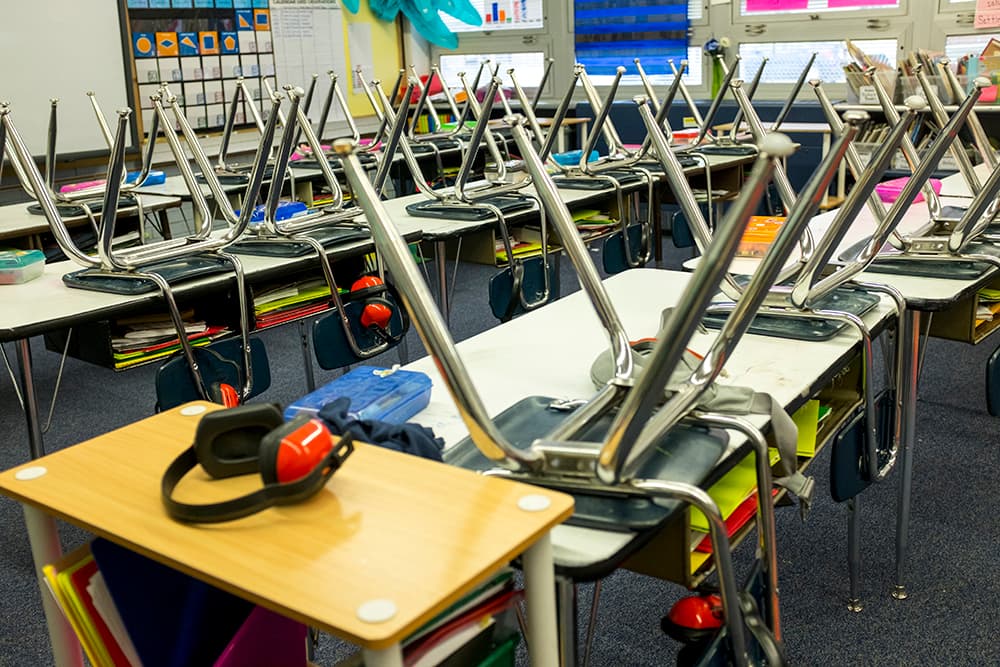
When Eve Ulloa started working as the parent liaison at Denver’s Castro Elementary School nearly two decades ago, the building was bustling with more than 700 students. Today, the school in heavily Latino southwest Denver has about half that many.
The steep drop is partly due to the loss of Castro’s preschool classes, which were moved to a different school along with a few specialized programs for students with disabilities.
But there are bigger forces at work, too. And they’re the same ones that recently led demographers to predict that Denver Public Schools, once the fastest growing urban school district in the country, will begin to see its numbers shrink. Southwest Denver, home to more elementary school children than any other part of the city, is expected to be the hardest hit.
“It’s kind of stunning,” said Rosemary Rodriguez, who until a month ago represented the region on the school board. “We were projecting a slight decline, but it’s pretty dramatic.”
In Ulloa’s job at Castro bridging home and school, she sees why. In the past, it wasn’t uncommon for students to have a sibling in every grade from kindergarten to fifth. Now, she said, the biggest families have at most four children. Parents are dissuaded from having more, she said, because of tight budgets or the fear they’ll be deported and have to leave their kids.
Ulloa has also seen an uptick in the number of families forced out of their homes by rising rent, as young adults without children flock to Denver and housing becomes an even hotter commodity. Instead of $700 a month, rentals in the area are going for at least twice that.
“In the last three months, I’ve had families come to me and say, ‘We’re getting evicted. We’ve tried. We’re behind,’” Ulloa said the week before winter break.
Families usually move in with friends or relatives, she said, sleeping on couches and basement floors while they save up for a new place. Oftentimes, they can’t find anything within their price range in gentrifying Denver and must look north to Commerce City or Thornton.
“You see the kids cry that they have to move,” Ulloa said. Many don’t want to leave Castro, located in the Westwood neighborhood. “A lot of them, this is their second home — and being told they have to move somewhere because their parents can’t afford it, it is heartbreaking.”
Denver Public Schools hired outside demographers from the Denver Council of Regional Governments and the Denver-based Shift Research Lab for the first time last year to conduct the district’s enrollment projections. (Shift Research Lab is affiliated with the Piton Foundation, which is a funder of Chalkbeat.) The district released the predictions last month.
By 2021, the student population, which stands at 92,686 today, is projected to shrink by nearly 2 percent. The primary reasons, demographers concluded, are lower post-recession birth rates and skyrocketing housing prices that are pushing poor families out of the city.
The elementary school population is expected to decline by an even bigger 7 percent, according to the analysis. And in southwest Denver, the number of elementary school children is forecast to drop a whopping 16 percent, from 9,455 this year to 7,933 in 2021. The region is projected to lose nearly 2,000 students overall in that time period.
Such dramatic decreases can have grave effects on schools, which are funded in Denver on a per-pupil basis. The fewer students a school has, the less money it has to pay for teachers, nurses, mental health counselors, and extracurricular programs.
A committee of community leaders tasked with recommending ways to address declining enrollment and combat segregation recently suggested the district create a clear and community-driven process for consolidating under-enrolled schools.
The district has shied away from defining how few students is too few. But the committee noted that schools with enrollment below 300 “face particular challenges.” Very few schools in southwest Denver meet that threshold today, though a handful are close.
Skepticism about the district’s previous enrollment forecasts was one factor that led officials to hire outside demographers. But some leaders in southwest Denver still don’t have faith in the predictions. This year’s forecast was the first to project big declines in the region.
“I find it suspicious that our public school district is pointing at gentrification as a reason for folks not attending the local schools,” said city council member Paul Lopez, who grew up in west Denver and represents part of the region. He said it’s the district practice of closing and replacing low-performing schools that scares families away.
“I’d like to see what data they used,” Lopez said.
Jennifer Newcomer of Shift Research Lab shared some of it with Chalkbeat. Her numbers show births in southwest Denver have plummeted from a 20-year high of 2,500 in 2002. There were just 1,820 births in 2016, which was still the most in the city but not by much.
Residential property statistics from the Denver Assessor’s Office show that median housing values in the neighborhoods expected to experience the largest enrollment declines — such as Westwood, Athmar Park, and Ruby Hill — jumped 50 percent from 2014 to 2016. In 2014, the median value of a home in Ruby Hill was $161,550. Two years later, it was $246,300.
Gentrification is happening in southwest Denver, Lopez admitted, but more slowly than in other regions. He credits the slower pace to zoning rules that restrict where high-rises can be built, the fact that much of the housing stock is 1950s-era workforce housing instead of historic brick bungalows, and the strength of the community to organize against disruptive forces.
Unlike in other parts of the city, gentrification doesn’t look like slot homes and Whole Foods stores. Instead, aging homeowners are selling to young professionals, mobile home parks are being razed to make way for apartments, and landlords are raising rents.
Angela Cobián, who was elected in November to succeed Rodriguez in representing the region on the school board, has felt the effects herself. Cobián said last month she was planning to move into a friend’s basement after her lease was up Jan. 1 to save money.
“As a new elected official, I’m thinking about what can I do to push for long-term solutions,” she said. “My whole mantra as to why I decided to run, which I kept repeating, was I wanted my students to grow with my city and not be displaced. And then literally the first thing I learn as a school board member is the projected displacement of our students.”
“It is kind of crushing,” she said.
Jeannie Nelson, a mom of four and a regular volunteer at Schmitt Elementary in the Ruby Hill neighborhood, has seen it on her block, too. Families with young children are moving out and people without children, or with teenage children, are moving in. Her son’s best friend moved east to Aurora because his family’s landlord suddenly wanted $2,000 a month for a three-bedroom house with no basement and just one bathroom, she said.
Ruby Cardenas, a mom of three and another Schmitt volunteer, said she’s heard of other families moving out of the city and into rural farming communities in an attempt to distance themselves from the radar of federal immigration authorities.
Both women are worried about the impacts to Schmitt, where enrollment has dropped from 380 five years ago to 287 this year. There are other factors at play, too: Schmitt recently underwent big changes in an attempt to boost its student performance, which had been lagging, and more than half of neighborhood children choose to attend another school. But fewer kids in southwest Denver means the pool of potential students is drying up.
“We need families,” Nelson said.
Chalkbeat is a nonprofit news site covering educational change in public schools.












